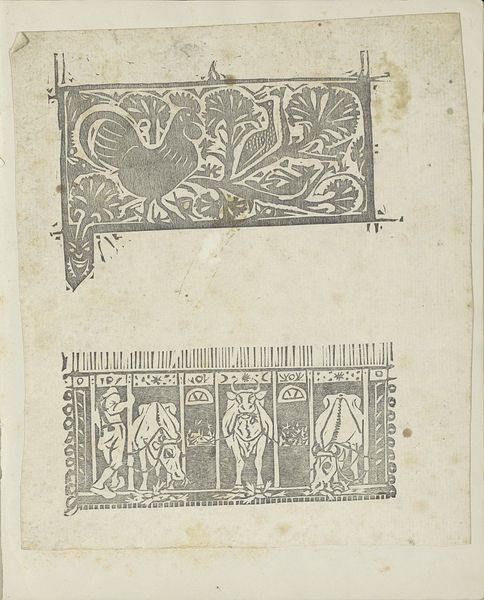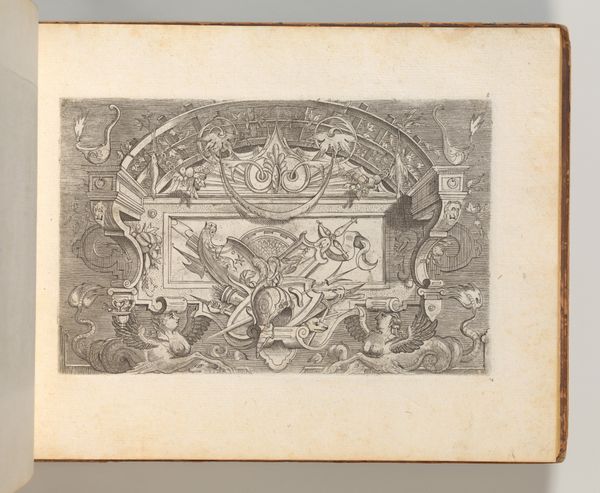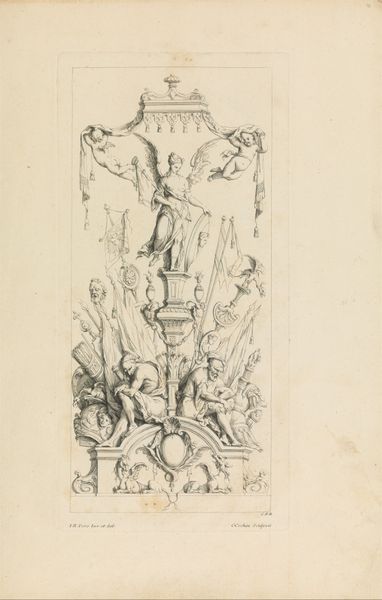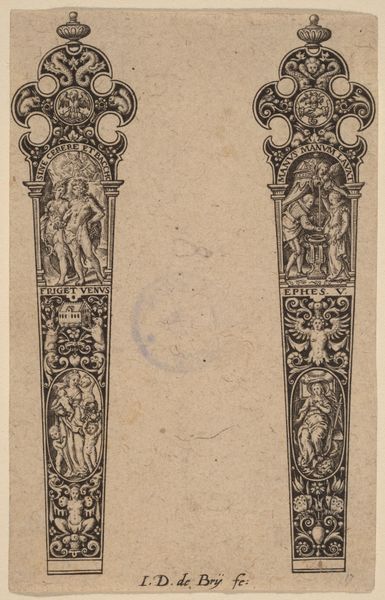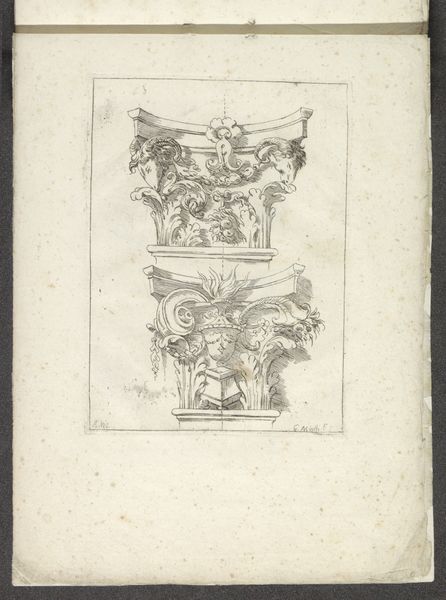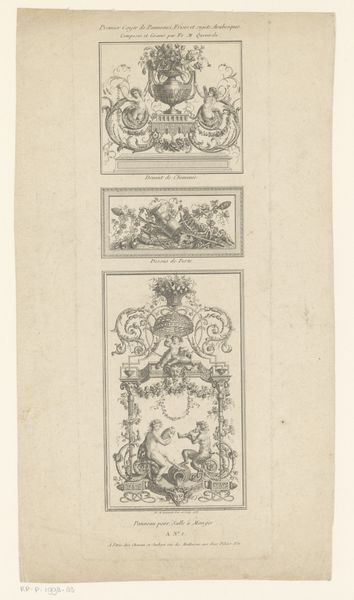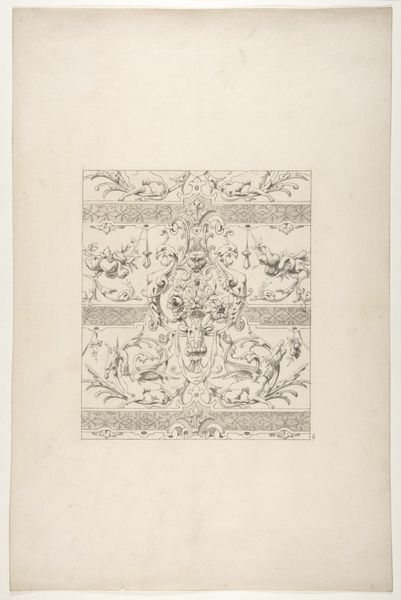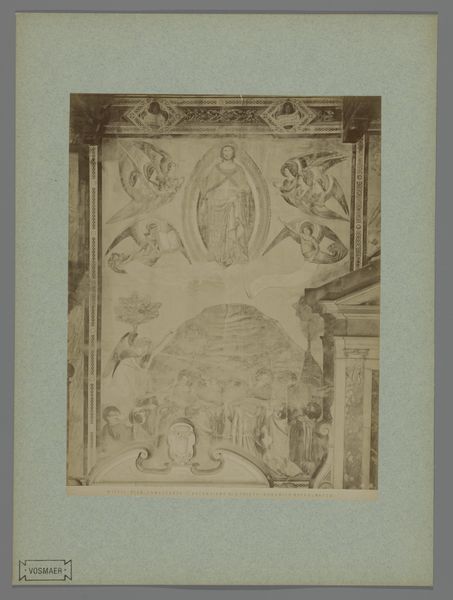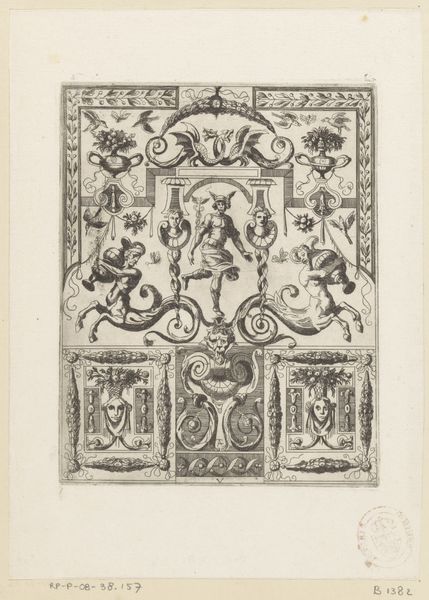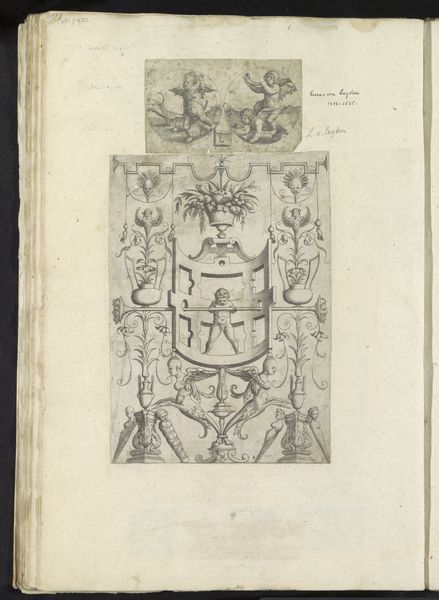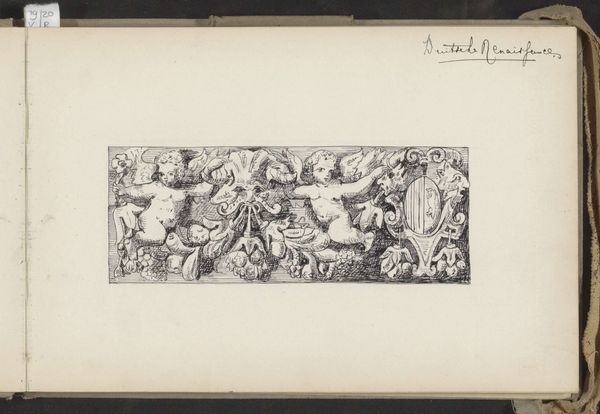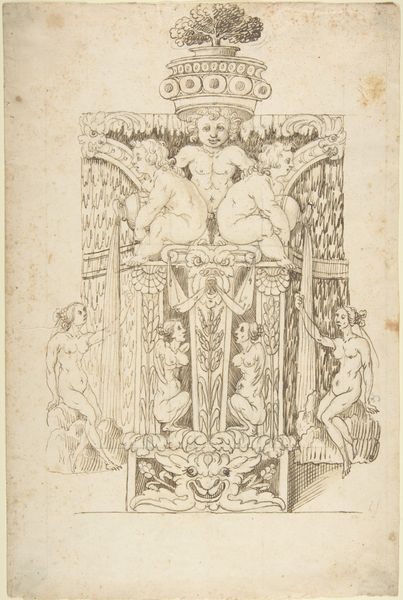
Twee versieringen voor schutbladen voor de publicatie 'Kunst en Samenleving' c. 1893
0:00
0:00
gerritwillemdijsselhof
Rijksmuseum
drawing, graphic-art, print, ink, woodcut
#
drawing
#
graphic-art
#
aged paper
#
toned paper
#
art-nouveau
# print
#
old engraving style
#
sketch book
#
personal sketchbook
#
ink
#
geometric
#
pen-ink sketch
#
woodcut
#
ink colored
#
line
#
pen work
#
sketchbook drawing
#
decorative-art
#
sketchbook art
Copyright: Rijks Museum: Open Domain
Curator: What a delightful page! My eye is drawn immediately to the textures and intricate linework. Editor: It has this old-world, slightly creepy feel. Like something from a gothic children’s book. Let’s talk about what it is. Curator: Of course. What we’re looking at is a work titled ‘Twee versieringen voor schutbladen voor de publicatie "Kunst en Samenleving,"’ or ‘Two decorations for endpapers for the publication "Art and Society."’ It’s by Gerrit Willem Dijsselhof, dating from around 1893, and housed at the Rijksmuseum. It appears to be a study sheet with two sketches made with ink, for use as frontispieces, likely printed as a woodcut. Editor: Ah, that makes sense. A practice sheet. There's something intimate about seeing the artist’s hand like this. Did 'Art and Society' have a particular social agenda, do we know? Curator: Indeed. The "Kunst en Samenleving" publication promoted the idea that art should be integrated into everyday life, influencing everything from furniture design to architecture. Dijsselhof was heavily involved in this movement, exploring ways to create art for the masses, challenging the traditional hierarchy between fine and decorative arts. These would bring aesthetic sophistication to a printed page. Editor: So these aren’t just whimsical doodles. Look at the top one: that spiderweb is almost architectural. You could mass produce this and suddenly, any book feels elevated, or charged. And the bottom with all of those cute little seahorses— Curator: Exactly. It’s a fascinating look at art's role in shaping culture. Dijsselhof aimed to ennoble printmaking in its materials and message. What do you think of that, beyond the surface? Editor: It almost feels like these sketches, with their intricate detail and somewhat eerie beauty, hold a hidden narrative. I see symbolism and whimsy side by side. As though the very act of creation – the process of sketching, the labor of the craftsman – is trying to elevate the mundane to the truly inspiring. A book cover to transform a book experience into more than just something read and cast off. Curator: Well said. The choice of a spiderweb, a natural trap, could symbolize the way art can capture our attention. And those seahorses and fish below…perhaps a symbol of art swimming through the waters of society. Editor: Makes you wonder what he was sketching next, doesn’t it? This really highlights how deeply the creation and circulation of art reflects both social values and personal expression. I love how Dijsselhof makes us stop to ponder how materials, techniques, and concepts interact.
Comments
No comments
Be the first to comment and join the conversation on the ultimate creative platform.
